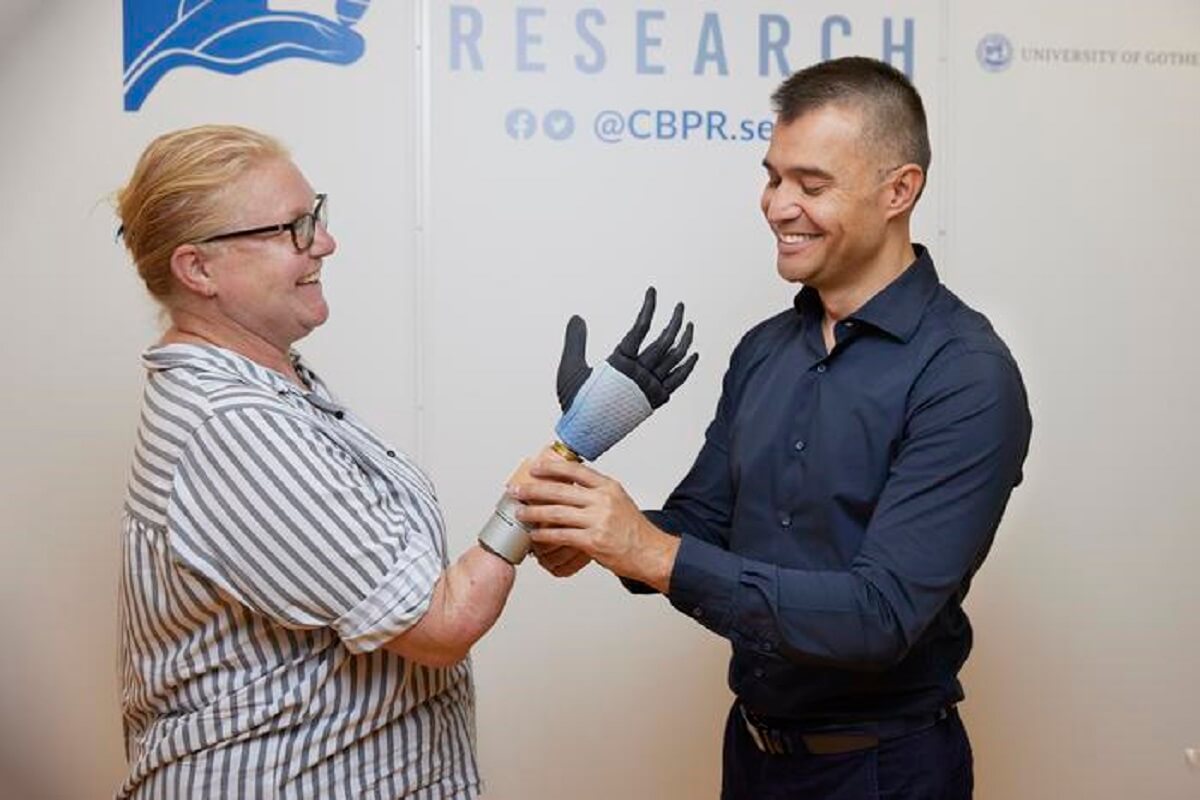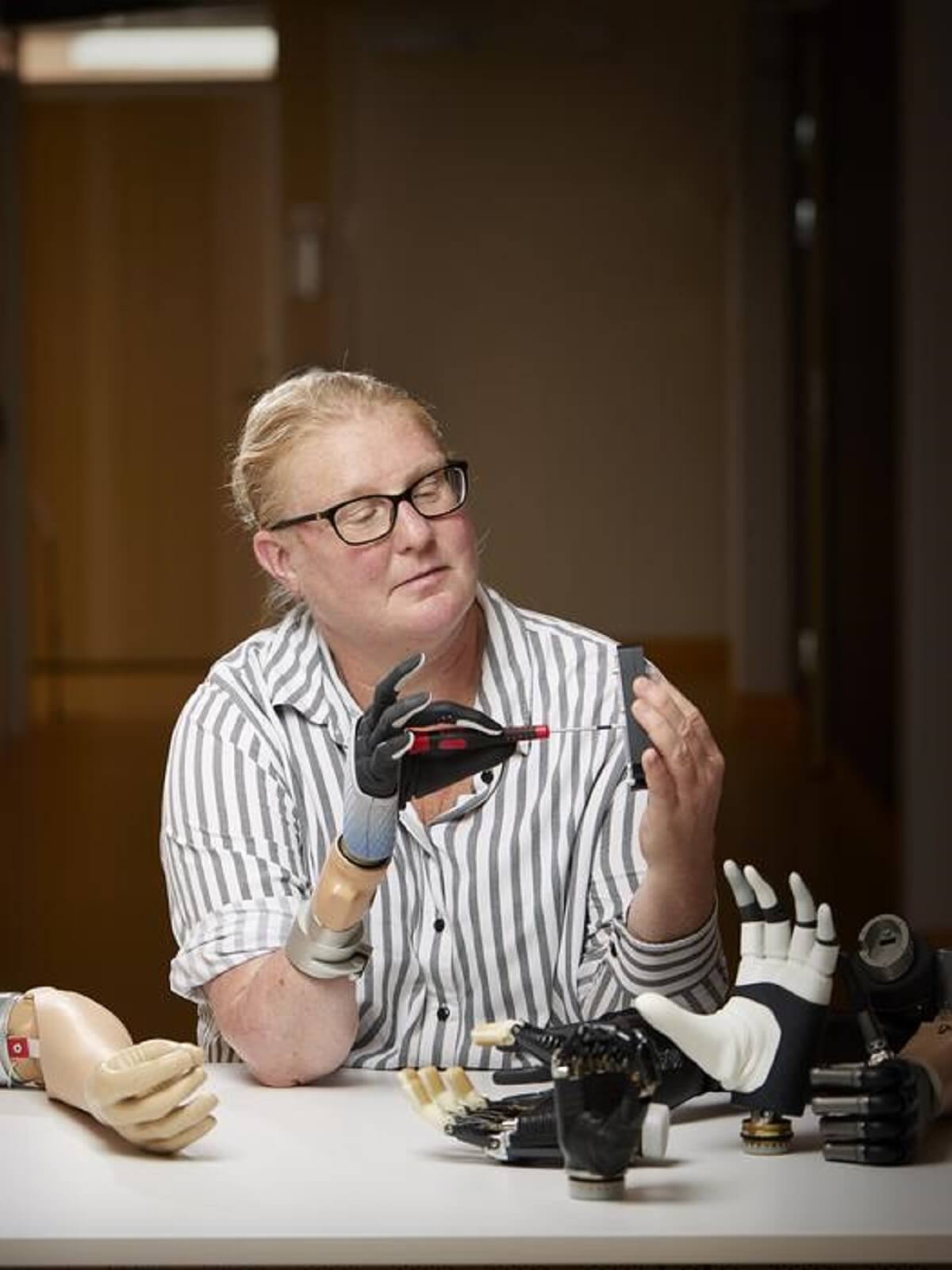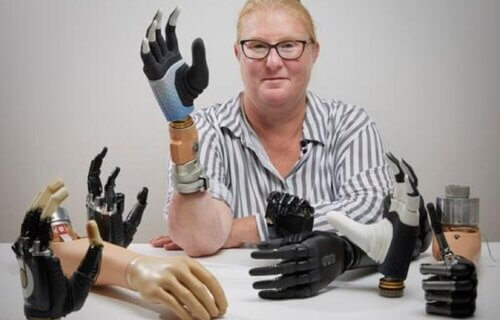MOLNDAL, Sweden — A Swedish patient, fondly referred to as the “real bionic woman,” has achieved a groundbreaking milestone by becoming the first individual to have a prosthetic limb seamlessly integrated with both her nervous and skeletal systems. The 50-year-old engineer, Karin, received this state-of-the-art bionic arm years after a farming mishap tragically cost her her right hand two decades ago.
The development of this innovative limb is credited to an international interdisciplinary team. They employed osseointegration, a technique in which bone tissue bonds with titanium to form a sturdy mechanical connection. This process was further enhanced by establishing a link to the nervous system through electrodes embedded in the nerves and muscles.
The pioneering research promises a brighter horizon for amputees globally.
Passionately speaking about her new limb, Karin says it drastically diminished her phantom pain and was “life-changing,” restoring her day-to-day functionalities and boosting her independence.

“It felt like I constantly had my hand in a meat grinder, which created a high level of stress and I had to take high doses of various painkillers,” says Karin in a media release.
This debilitating pain took a turn when the groundbreaking bionic technology was tailored for her. Having undergone the surgical procedure in December 2018, Karin began actively using her new arm by mid-2019, marking four years of functional use.
Historically, challenges with mechanical attachment and control deterred many amputees from embracing even the most advanced prosthetics available. To address these issues, a cross-functional team of engineers and surgeons from Sweden, Australia, and Italy developed an impressive interface that harmoniously integrates humans and machines.
“Karin was the first person with below-elbow amputation who received this new concept of a highly integrated bionic hand that can be used independently and reliably in daily life,” says Dr. Max Ortiz Catalán, a key figure in the research. “The fact that she has been able to use her prosthesis comfortably and effectively in daily activities for years is a promising testament to the potential life-changing capabilities of this novel technology for individuals facing limb loss.”

Among the challenges the team tackled was developing a neuromusculoskeletal implant that could link the bionic limb’s electronic control system with the user’s nervous system.
“Our integrated surgical and engineering approach also explains the reduction in pain, as Karin is now using somewhat the same neural resources to control the prosthesis as she did for her missing biological hand,” adds Dr. Catalán.
A pivotal component of this new technology is the skeletal attachment via osseointegration.
“The biological integration of titanium implants into bone tissue creates opportunities to further advance amputee care,” says Professor Rickard Brånemark, affiliated with both MIT and Gothenburg University in Sweden.
Furthermore, the study showcases a reconfiguration of the nerves and muscles in Karin’s remaining limb, providing the prosthesis with enhanced motor control. This intricate surgical phase was led by Dr. Paolo Sassu at Sahlgrenska University Hospital in Sweden.
The culmination of these efforts was a product named Mia Hand, designed by Prensilia, an Italian company specializing in robotic limbs. This hand is equipped with specialized motor and sensory mechanisms, empowering users to perform roughly 80 percent of routine tasks.
“Mia Hand was born to be shown and not hidden. We wanted the users to be proud of what they are, rather than ashamed of what was lost,” explains Dr. Francesco Clemente, Prensilia’s Managing Director.
For Karin, the journey with her bionic limb has been transformative.
“For me, this research has meant a lot, as it has given me a better life,” the real bionic woman concludes.
The study is published in the journal Science Robotics.
You might also be interested in:
- Superhuman sight: Scientists develop 3D prosthetic eye better than real thing
- Groundbreaking bionic arm brings sense of touch back to amputees with prosthetic
- Student with no fingers invents prosthetic hand for just $25 — using a 3D printer
South West News Service writer James Gamble contributed to this report.

